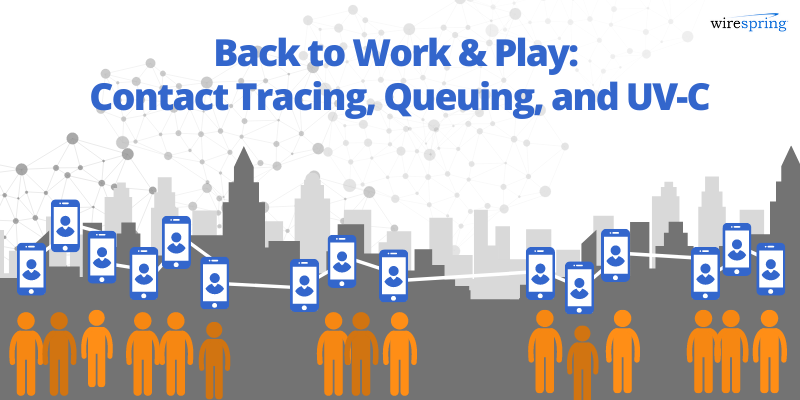
As we pass the six month anniversary of when COVID-19 was declared a pandemic by the WHO, many businesses and local attractions continue to see reduced foot traffic and revenue. While people are slowly making their way back out, safety is still a concern. Though we might not see a vaccine during 2020, there are many new products and services on the market that businesses can potentially leverage to improve safety in their out-of-home environments. Here are just a few new ways that tech is helping us get back to work, school, and play.
Contact Tracing Apps
The shift to work-from-home (WFH) has been one of the key trends during this time period. While larger firms like Google and Workday are extending their WFH policies until mid-2021, many companies have jumped into the contact tracing market to gauge safety at work, especially for the public sector. One early leader in this field is Work.com by Salesforce, which acts as a command center for business leaders to manage office safety. PWC, IBM, and ServiceNow have also launched their own tools for managing the return to the workplace. By using products like these, business leaders can be proactive in understanding their team dynamics and take precautions to minimize the likelihood that COVID-19 will spread in their workplaces.
It’s not only offices that need this extra level of protection, but also the general public. With a majority of the population owning smartphones, Google and Apple have built a large-scale exposure notification system to help curb the spread of the disease. Right now, only a handful of US states and territories have adopted technology that notifies people when they have come in contact with someone who has self-reported COVID-19 symptoms, with the notification algorithms based on phone location data and such. Though tracing systems are not a new concept, it is impressive that digital versions became available only a few months after the outbreak.
Queuing Systems & Digital Ticketing
Since local attractions like museums and parks can't go fully remote like offices can, many venues have added some type reservation or queuing system to manage guest flow. In some cases, adding digital tools has also elevated the customer experience. For instance, the Cleveland Museum of Art has invested in online-guided tours and timed digital tickets that allow people to enjoy the museum’s collections in safe numbers.
Public and private organizations alike are also exploring the use of virtual queuing systems like FireCast SmartFlow, which make it possible for consumers to book a time in advance or reserve their place in line without the need to line up in potentially crowded areas.
UV-C Sanitization and Filtration
As the scientific community learns more about COVID-19, it’s apparent that the virus can spread quickly and survive on surfaces for at least some period of time. This is one reason why some hotels and attractions have started to upgrade their HVAC systems to include UV-C filtration, which is said to kill 90% of bacteria and viruses. In addition to making this change, the Seattle Space Needle invested almost $1 million in mechanisms for regularly disinfecting and sanitizing their high-traffic areas. Many large hotel chains are exploring HEPA/UV-C filtration systems in order to make customers feel safer and rebuild trust in the hospitality industry.
Despite the stress of the pandemic, it's great to see companies and organizations working quickly to develop and deploy new technologies and protocols. Some of these endeavors may be more costly than others, but the sum total of these efforts should be a safer, more efficient, and ultimately more enjoyable experience for employees and consumers alike.

 Subscribe to the Digital Signage Insider RSS feed
Subscribe to the Digital Signage Insider RSS feed